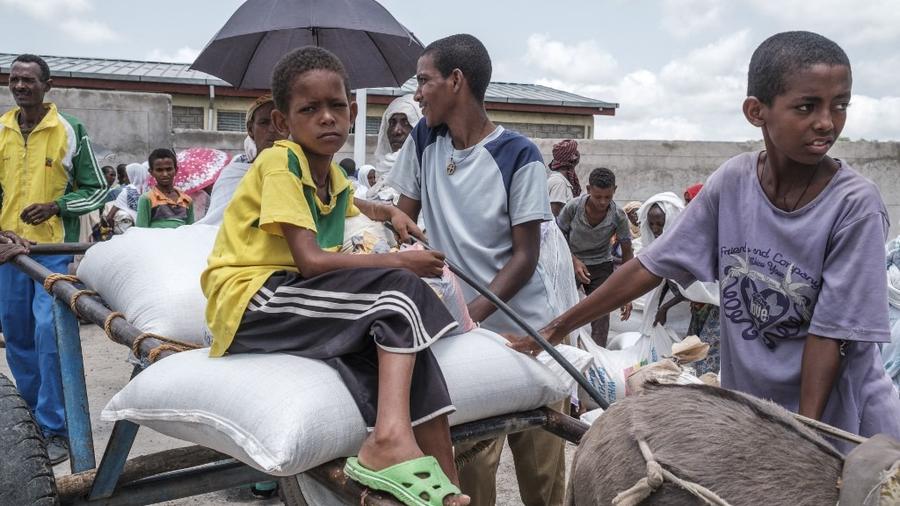 Children wait next to sacks of wheat during a food distribution organized by the Amhara government near the village of Baker, 50 km southeast of Humera, in the Tigray Region of Ethiopia, on July 11, 2021. (EDUARDO SOTERAS / AFP)
Children wait next to sacks of wheat during a food distribution organized by the Amhara government near the village of Baker, 50 km southeast of Humera, in the Tigray Region of Ethiopia, on July 11, 2021. (EDUARDO SOTERAS / AFP)
UNITED NATIONS - Severe malnutrition, also called severe wasting, is one of the top threats to child survival, the UN Children's Fund (UNICEF) said in a report on Tuesday.
"Severe Wasting: An overlooked child survival emergency" details that around one in five deaths among children under age five can be attributed to severe wasting.
A lack of nutritious food and repeated bouts of illness, such as diarrhea, measles, and malaria, compromise a child's immunity.
Young children who have gone without food, rapidly drop a lot of bodyweight, often exacerbated by bouts of infectious diarrhea, until they become so thin and frail, they look skeletal.
Catherine Russell, UNICEF chief
"Young children who have gone without food, rapidly drop a lot of bodyweight, often exacerbated by bouts of infectious diarrhea, until they become so thin and frail, they look skeletal," UNICEF chief Catherine Russell explained in the report's foreword.
Unlike famine or starvation, relatively few people have heard of severe wasting, although it affects around 13.6 million children globally under the age of five, and is one of the leading underlying causes of preventable deaths in young children.
"It is excruciatingly painful for the child whose body is battling the condition. Without lifesaving treatment, it is a battle that many lose," Russell noted.
She added that conflicts and climate crises, which destroy access to healthy diets, are "causing that number to rise."
Even in stable countries, child wasting has increased by over 40 percent.
ALSO READ: WHO: 1m Afghan children at risk of dying amid malnutrition
In Uganda, child wasting has increased by 61 percent since 2016.
"When a baby or child is this underweight and weak, they cannot eat normally," the UNICEF chief explained, meaning that traditional food aid, like bags of wheat or soya, cannot save them.
Ready-to-use therapeutic food (RUTF) is a life-saving, high-calorie nut paste given as a medical treatment, which can literally mean the difference between life and death for these children.
Despite its simple, affordable effectiveness, amid a sharp decline in nutrition financing, around 10 million desperate children are not receiving RUTF largely due to the ongoing economic shock of COVID-19.
Meanwhile, Russia's special military operation in Ukraine, with both nations among the world's top agricultural producers and exporters, has blocked supply lines and impacted global food security, threatening even more children with wasting.
A prolonged reduction of food exports could increase the number of undernourished people worldwide by eight to 13 million in 2022 and 2023, according to the UN's food agency.


